Posts Tagged "Customer testimonials"
Articles
- Best Marketing Conference Sponsorship
- What Does it Mean to Be an Exhibitor at a Conference?
- What Is the Biggest Social Media Conference?
- What Is an Innovation Conference?
- What Is a Typical B2B Event?
- What Are the Cloud Technology Events in 2025?
- Marketing Event Volunteer Opportunities: A Comprehensive Guide
- Digital Marketing Event Volunteer Opportunities Near Me
- What Does a Volunteer Do at a Conference?
- Is DigiMarCon Worth It?
- Is DigiMarCon Good?
- What is the Biggest Marketing Forum?
- What are Digital Marketing Conferences?
- Marketing Conference Exhibiting: Your Guide to Success
- Digital Summit Comparison: A Closer Look at DigiMarCon
- Digital Marketing Conference
- Digital Marketing Events: Your Guide to Success in 2025
- Marketing Conferences: Unlocking Your Business Potential in 2025
- What Is The Future of Digital Marketing in 2030?
- B2B Event Marketing Strategy: Unlocking Success For Your Business
- Why B2B Event Marketing?
- What Should a B2B Marketing Strategy Include?
- Top Marketing Conferences for 2025
- What Is the Future of Marketing in 2025?
Digital Marketing Conferences
- NORTH AMERICA
- DigiMarCon Cruise
(New Orleans, LA, USA) - DigiMarCon West
(Los Angeles, CA, USA) - DigiMarCon Northwest
(Seattle, WA, USA) - DigiMarCon Canada West
(Vancouver, BC, USA) - DigiMarCon Canada
(Toronto, ON, Canada) - DigiMarCon Canada East
(Montreal, QC, Canada) - DigiMarCon Florida
(Orlando, FL, USA) - DigiMarCon Gulf Coast
(Houston, TX, USA) - DigiMarCon Southern California
(San Diego, CA, USA) - DigiMarCon Midwest
(Chicago, IL, USA) - DigiMarCon Mid-South
(Nashville, TN, USA) - DigiMarCon Great Lakes
(Detroit, MI, USA) - DigiMarCon North
(Minneapolis, MN, USA) - DigiMarCon Central
(Kansas City, MO, USA) - DigiMarCon Texas
(Dallas, TX, USA) - DigiMarCon New England
(Boston, MA, USA) - DigiMarCon Mid-Atlantic
(Philadelphia, PA, USA) - DigiMarCon South Florida
(Miami, FL, USA) - DigiMarCon Southeast
(Atlanta, GA, USA) - DigiMarCon Central Florida
(Tampa, FL, USA) - DigiMarCon East
(New York, NY, USA) - DigiMarCon South Atlantic
(Charlotte, NC, USA) - DigiMarCon America
(Washington, D.C. USA) - DigiMarCon Northern California
(San Francisco, CA, USA) - DigiMarCon Rocky Mountains
(Denver, CO, USA) - DigiMarCon South
(San Antonio, TX, USA) - DigiMarCon Silicon Valley
(San Jose, CA, USA) - DigiMarCon Orange County
(Anaheim, CA, USA) - DigiMarCon Southwest
(Phoenix, AZ, USA) - DigiMarCon World
(Las Vegas, NV, USA)
- DigiMarCon Cruise
- LATIN AMERICA
- EUROPE
- MIDDLE EAST
- AFRICA
- ASIA PACIFIC
- DigiMarCon Hawaii & Pacific
(Honolulu, HI, USA) - DigiMarCon Asia & Japan
(Tokyo, Japan) - DigiMarCon New Zealand
(Auckland, New Zealand) - DigiMarCon Australia
(Sydney, Australia) - DigiMarCon Oceania
(Melbourne, Australia) - DigiMarCon Southeast Asia
(Singapore) - DigiMarCon India
(New Delhi, India) - DigiMarCon North Asia & China
(Shanghai, China)
- DigiMarCon Hawaii & Pacific
- VIRTUAL
Digital Marketing Blog
- Unlock Website Traffic Growth: 10 Proven Hacks to Try September 16, 2025
- Sponsorship Opportunities at DigiMarCon 2025 – Join Us Now September 16, 2025
- Sponsorship Opportunities at DigiMarCon 2025 – Join Us Now September 16, 2025
- Mastering Video Marketing: Essential Tips to Boost Your Business September 15, 2025



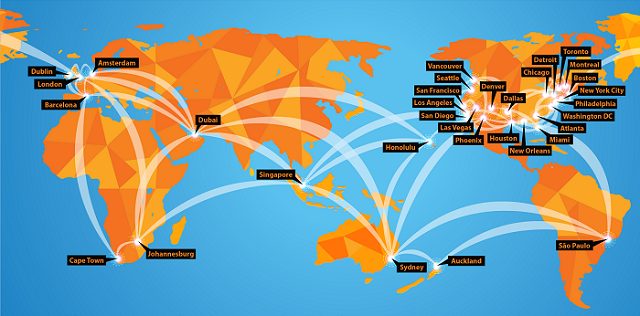


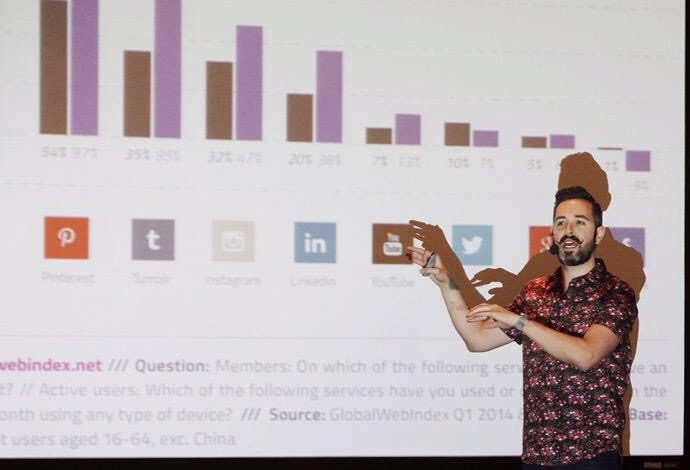




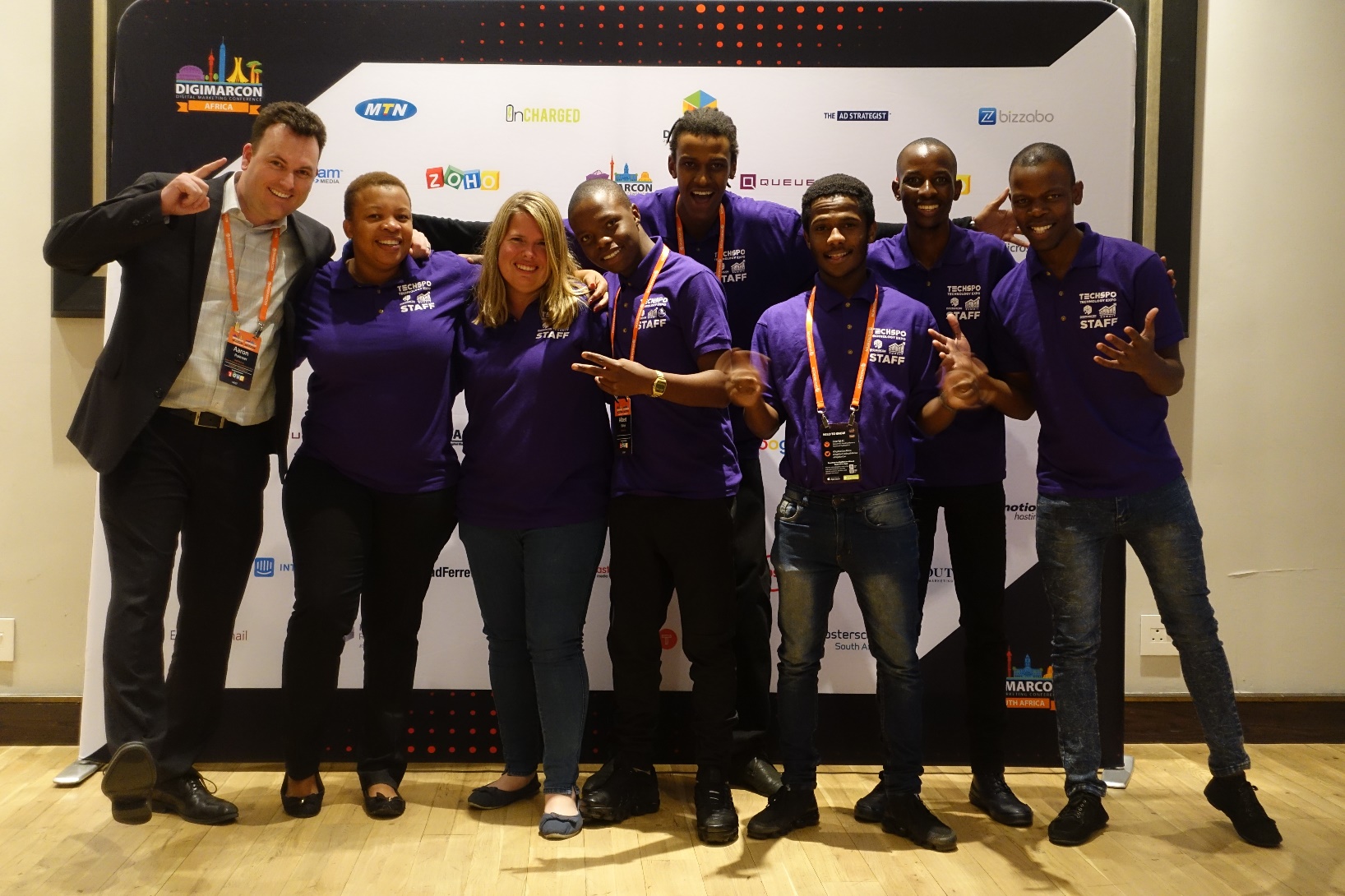

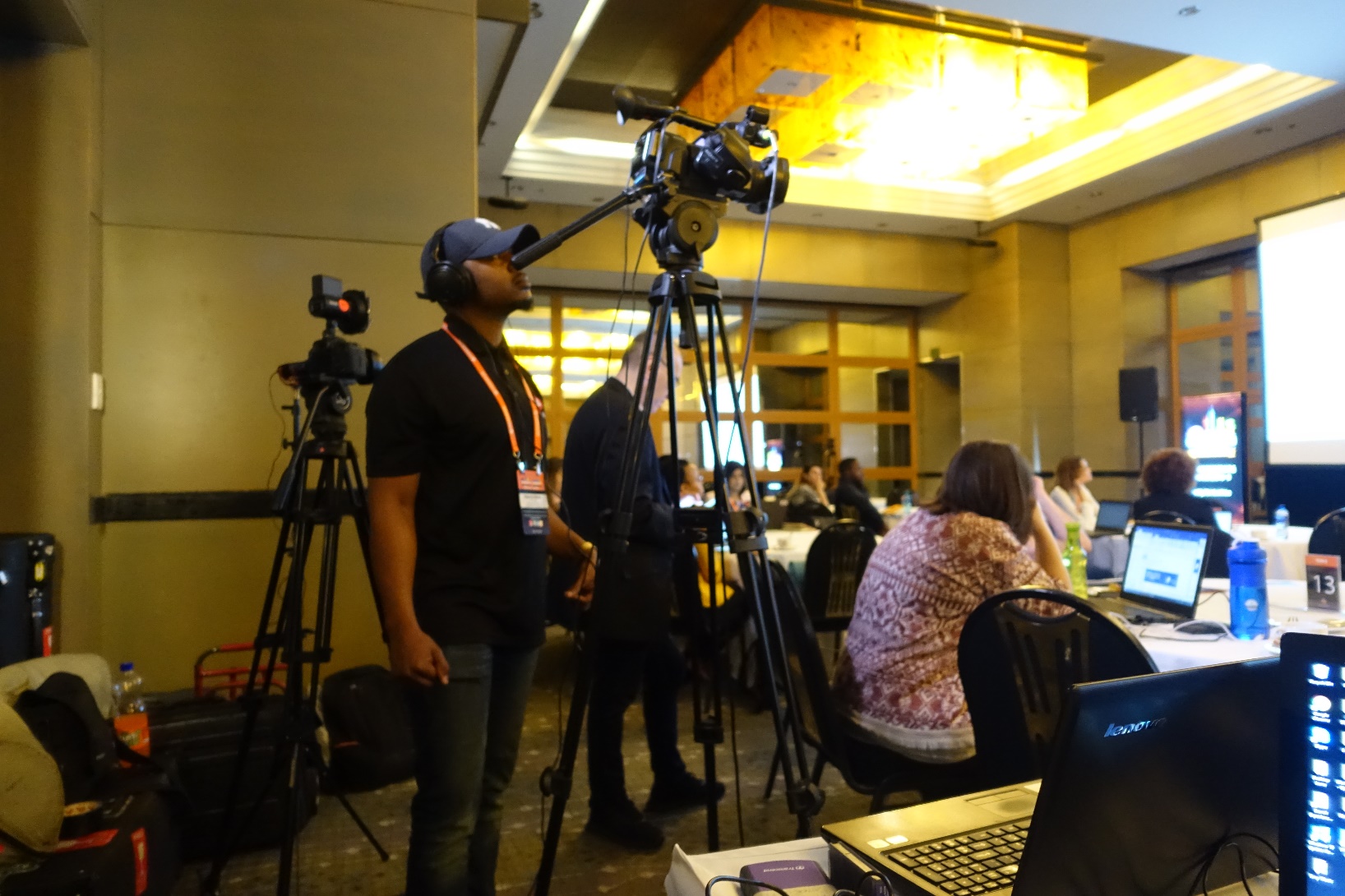



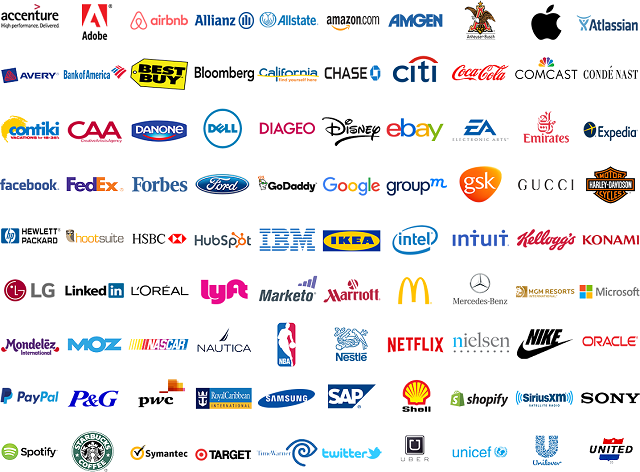















Leverage User-Generated Content for Business Growth
In today’s digital world, businesses are always looking for new ways to grow and connect with their audience. One great way is using User-Generated Content (UGC). This approach helps make a brand seem more real and trustworthy, building strong customer loyalty.
UGC boosts a brand’s trustworthiness and offers social proof. This proof can sway people to buy, helping your business grow. As we dive into UGC’s benefits, it’s clear it’s more than just a trend. It’s a key part of a winning digital marketing plan.
Key Takeaways
Understanding the Power of User-Generated Content
User-generated content (UGC) is a powerful tool for businesses. It lets them use content made by customers to grow and engage. This includes online reviews, customer feedback, and social media posts. Together, they make a brand more real and interesting.
UGC greatly affects how people shop. People often check what others say before buying. This makes UGC a kind of social proof, building trust and credibility. For example, a study showed that people trust brands more when they see lots of UGC.
UGC also gets customers involved in the brand story. When people share their experiences or make content about a brand, they feel more connected. This creates a community and gives businesses useful insights into what customers like.
Also, UGC helps a brand be seen more online. Social media posts can spread a brand’s message far and wide. This kind of marketing is cheap but very good at getting people to notice and engage with a brand.
In short, knowing how to use UGC is key for businesses to keep up in today’s digital world. By using customer feedback and encouraging UGC, businesses can gain trust, boost engagement, and grow.
Types of User-Generated Content That Drive Business Results
User-generated content is powerful because it comes in many forms. This includes reviews, testimonials, and content from communities. Businesses can use this variety to improve their marketing and connect better with their audience.
Leveraging Review Platforms
Review platforms are key for user-generated content. Encouraging customers to leave reviews on sites like Google My Business or Yelp can really help a company’s image. A study showed that businesses with good reviews get more new customers.
To make the most of review platforms, businesses should:
Testimonials are also very effective. Showing customer testimonials on websites or in ads can build trust with new customers. Here are some tips to make testimonials work:
By using these types of user-generated content, businesses can make their brand more engaging and trustworthy. This leads to better results through community content, peer recommendations, and crowdsourced content.
The Business Benefits of User-Generated Content
User-generated content (UGC) offers many benefits to businesses. It boosts customer engagement and improves brand credibility. By using UGC, companies can tap into the trust and authenticity that comes from customer-created content.
One key advantage of UGC is it builds trust with potential customers. Seeing real people recommend a product or service makes it more believable. This social proof helps increase conversion rates.
Customer Feedback is another big plus of UGC. It lets businesses learn from their customers. This feedback helps improve products, address concerns, and boost satisfaction.
UGC is also a cost-effective marketing strategy. It saves money by using customer content instead of professional content. This approach cuts marketing costs and offers a good return on investment.
UGC also boosts customer engagement. When customers see their content on a brand’s site, they’re more likely to stay engaged. This can create a loyal community of brand supporters.
To get the most from UGC, businesses should create campaigns that encourage and reward customer participation. This way, they can fully use UGC to grow their business.
Strategies for Encouraging Customer-Created Content
Businesses can tap into the power of customer-created content by using the right strategies. They need to know what drives customers to contribute. And they must create an environment that encourages them to do so.
Setting Clear Campaign Objectives
To get customers to create content, businesses must first set clear goals for their campaigns. These goals could be to boost brand awareness through Social Media Posts, get more leads, or increase sales. By setting specific, measurable goals, businesses can focus their strategies to meet these objectives.
Having clear goals also helps in creating a campaign that really speaks to the target audience. For example, a campaign focused on Community Content might ask customers to share their experiences with a product or service. This builds a sense of belonging and loyalty among customers.
Creating Compelling Participation Hooks
Participation hooks are the incentives or motivators that get customers to create and share content. These can be contests, giveaways, or recognition on social media. The goal is to create a hook that appeals to the target audience and fits with the campaign’s goals.
For instance, a business might start a Crowdsourced Content campaign by asking customers for ideas for a new product feature. This not only creates engaging content but also gives valuable insights into what customers want.
By combining clear goals with compelling participation hooks, businesses can craft a strong strategy for customer-created content. This approach boosts engagement and builds a sense of community and loyalty among customers.
The success of these campaigns depends on inspiring and motivating customers. By understanding their needs and preferences, businesses can create campaigns that are both effective and engaging.
Integrating User-Generated Content Across Marketing Channels
The power of UGC is in its ability to reach more people through different marketing channels. This makes it more impactful. Businesses use user-generated content in emails, social media, and websites to engage customers better and boost sales.
Email marketing is a great place to use UGC. Adding customer feedback or photos to newsletters makes the content more personal. For example, a clothing store could show photos of customers wearing their clothes, making it more relatable.
Social media is perfect for building a community and getting people to interact. Brands can start campaigns that ask users to share their experiences or photos. A travel company might ask users to post their travel photos on Instagram with a certain hashtag.
Websites also benefit from UGC, like online reviews. Showing customer reviews on product pages makes the brand more trustworthy. Businesses can also have special sections for user-generated content, like customer stories.
To use UGC well, businesses should:
By using UGC in many marketing channels, businesses can tell a stronger brand story. This can lead to more loyal customers and growth.
Legal Considerations and Best Practices for UGC
Businesses need to know the legal sides of user-generated content (UGC) to use it well. UGC adds realness and connection that ads can’t. It’s key for marketing.
Legal Considerations are important for UGC. Companies must deal with copyright and privacy issues to stay safe. Getting the right permissions from creators is essential.
Following Best Practices helps manage UGC risks. This means having clear rules, guiding users, and being open about UGC use. It’s also good to track permissions.
Knowing the law and following best practices helps businesses use UGC safely. This approach keeps the company safe and builds trust with customers.
Measuring the Impact of User-Generated Content
Understanding the right metrics is key to unlocking UGC’s full potential. As businesses use UGC for growth, measuring its impact is crucial.
Why Measure UGC? Measuring UGC shows how well it engages audiences and drives conversions. By analyzing the right metrics, companies can improve their UGC strategies to get better ROI.
Engagement Metrics
Engagement metrics show how audiences interact with UGC. Key metrics include:
These metrics help businesses see how well their UGC campaigns are doing. For example, many shares on social media mean the content is hitting the mark.
Conversion metrics are key to understanding UGC’s direct impact on business outcomes. These include:
By tracking these metrics, businesses can see how much revenue comes from UGC. This makes a strong case for investing more in UGC strategies.
In conclusion, measuring UGC’s impact through engagement and conversion metrics is vital. By knowing what works, companies can improve their UGC strategies. This maximizes the benefits of UGC.
Success Stories: Brands Winning With User-Generated Content
Companies have found a way to connect with people through User-Generated Content (UGC). This method lets businesses use Peer Recommendations to build trust and get people involved.
Many brands have seen great success with UGC. For example, a well-known outdoor clothing company asked customers to post photos of themselves wearing their clothes on social media. They used a special hashtag for it. This not only brought in lots of Crowdsourced Content but also helped them reach more people.
These strategies have led to big wins for brands. They’ve seen more people know about their brand, customers sticking around longer, and better products. By looking at these success stories, businesses can learn how to use UGC well in their marketing.
The power of UGC is clear in the success of brands that use it. As more companies see its value, we’ll see even more creative ways to use it in marketing.
Conclusion: Future-Proofing Your Business with UGC
The digital world is always changing, and businesses need to keep up. User-Generated Content (UGC) is a key tool for growth. It helps businesses build a loyal community and stay relevant.
Using UGC means more than just using customer content. It’s about building a strong marketing plan. This plan helps your business thrive, even when the digital world changes.
Adding UGC to your marketing can make your strategy strong and flexible. As the marketing world keeps evolving, UGC will remain important. Businesses that use UGC wisely will likely succeed in the long run.
FAQ
What is User-Generated Content (UGC) and how does it differ from other marketing content?
User-Generated Content is made and shared by people, not brands. It includes social media posts, reviews, and testimonials. Unlike other marketing, UGC is real and trustworthy because it comes from customers.
How can businesses encourage customers to create User-Generated Content?
To get UGC, businesses should have clear goals and make it fun to participate. They can also use review sites and talk to customers on social media. Offering rewards for sharing experiences helps too.
What are the benefits of using User-Generated Content in marketing campaigns?
UGC boosts trust and engagement. It’s also a cost-effective way to market. Plus, it helps build a loyal community around your brand.
How can businesses measure the impact of User-Generated Content?
Track likes, shares, and comments to see how UGC performs. Also, look at sales and website visits. Use analytics to fine-tune your UGC strategy.
What are the legal considerations associated with using User-Generated Content?
Be mindful of copyright and privacy laws when using UGC. Always get permission and follow guidelines. This keeps your brand safe and respectful.
How can businesses integrate User-Generated Content across different marketing channels?
Use UGC in emails, social media, and websites. Share testimonials and social media posts. This creates a unified and engaging brand experience.
What are some best practices for managing User-Generated Content?
Have clear rules and get permission for UGC. Monitor it for quality and consistency. Also, have a plan for handling negative content.
Can User-Generated Content be used for Community Content and Crowdsourced Content initiatives?
Yes, UGC is key for building brand communities. It encourages engagement and creativity from customers. This helps your brand grow and thrive.
How can businesses leverage Peer Recommendations through User-Generated Content?
Use customer testimonials and reviews to build trust. Encourage sharing and offer rewards for referrals. This boosts your brand’s credibility and appeal.
Boost Your Brand with User-Generated Content (UGC)
In today’s digital world, User-Generated Content (UGC) is key in marketing. A study by Stackla found that 79% of people trust UGC when making buying choices.
This shows how important customer testimonials and user reviews are. They help increase brand awareness and keep customers loyal. Using UGC in marketing makes a brand more relatable and trustworthy.
Key Takeaways
What is User-Generated Content (UGC)?
In today’s digital world, user-generated content (UGC) is changing how brands talk to their customers. It builds a community and makes things feel real. UGC is any content made and shared by people, not the brand itself. This can be reviews, photos, videos, and social media posts.
Defining UGC in Marketing
In marketing, UGC means content made by people who use a product or service. It’s shared online. This can be online feedback, testimonials, or videos showing off a brand’s offerings. A report by Bazaarvoice says UGC includes reviews, photos, videos, and social media posts. All these help tell a brand’s story in a richer way.
Types of UGC Brands Can Leverage
Brands can use different types of UGC to boost their marketing. Some key ones are:
By using these UGC types, brands can make their marketing more engaging and real. This connects better with their audience.
Benefits of User-Generated Content
User-Generated Content (UGC) has changed how brands talk to their audiences. It brings many benefits that old marketing ways can’t match. By using crowd-sourced content, brands can see a big jump in their marketing success.
Increased Brand Authenticity
One key advantage of UGC is making a brand seem more real and trustworthy. Studies by Ipsos show UGC is seen as more genuine than content made by brands. When customers share their experiences with a brand, it builds trust with others.
This authenticity is key in today’s world, where people doubt traditional ads. Brands can show off real customers enjoying their products. For example, a fashion brand might use photos of people wearing their clothes, proving the product works in real life.
Enhanced Customer Engagement
UGC also boosts customer involvement. When people help create content for a brand, they feel closer to it. This can make them more loyal and eager to help the brand grow.
UGC also starts a conversation between brands and their customers. By responding to UGC, brands show they care about what their customers say. This can be done by liking, commenting, and sharing on social media, making the brand feel more alive and interactive.
Cost-Effective Marketing Strategy
Another big plus of UGC is it’s a budget-friendly way to market. Making great content can cost a lot. But, using what customers share, brands can get lots of content without spending a lot.
This doesn’t mean brands should stop making their own content. Instead, UGC can add to what they already do. For instance, a brand might use photos from customers in their social media or include testimonials in ads.
How to Encourage UGC Creation
To boost your brand’s presence with UGC, it’s crucial to understand how to motivate your audience to participate. Encouraging users to generate content not only enhances your brand’s authenticity but also fosters a sense of community around your products or services.
Running Contests and Challenges
One effective way to stimulate UGC is by running contests and challenges that invite users to share their experiences or creations related to your brand. For instance, a campaign by Coca-Cola that encouraged users to share their experiences on social media generated a significant amount of UGC, including user reviews and social media posts.
To execute this strategy, you can:
Leveraging Social Media Platforms
Social media platforms are fertile grounds for UGC. By leveraging these platforms, you can encourage users to share their online feedback and experiences with your brand. Create engaging content that prompts users to share their stories or photos with your products.
Strategies to leverage social media include:
Providing Incentives for Participation
Providing incentives is a direct way to encourage users to create and share content. This can be in the form of discounts, exclusive access to new products, or recognition on your brand’s social media channels. The key is to make the incentive valuable enough to motivate users to participate.
Some effective incentives include:
By implementing these strategies, you can create a robust UGC campaign that not only encourages participation but also builds a loyal community around your brand.
Best Practices for UGC Campaigns
Brands are using user-generated content more and more. It’s key to know the best ways to run UGC campaigns. This means getting audience contributions and picking the best content.
Setting Clear Guidelines for Content
It’s important to have clear rules for what content is allowed. This includes what kind of content, the tone, and any special tags or hashtags. With detailed guidelines, brands can avoid getting content that doesn’t fit their image.
Curating High-Quality Submissions
Choosing the best content is crucial for a UGC campaign’s success. A study by Olapic found that high-quality content leads to more engagement. Brands should check submissions often, pick the best ones, and share them on social media.
Acknowledging and Rewarding Contributors
It’s important to thank and reward those who contribute. This can be done with discounts, early access to new products, or being featured on social media. By recognizing their contributions, brands can keep their audience engaged and happy.
Following these best practices can make UGC campaigns more effective. This leads to more authentic brand image, better customer interaction, and more sales.
Case Studies: Brands Successfully Using UGC
Brands can make their marketing more real and fun by using user-generated content. Many have seen big wins by adding UGC to their plans.
GoPro: Inspiring Adventurers
GoPro is a great example of using UGC well. They ask users to share their GoPro videos and photos. This creates a big collection of exciting content.
This content shows off what GoPro can do and gets others excited to share their own adventures. Key parts of GoPro’s UGC plan are:
Airbnb: Showcasing Unique Stays
Airbnb uses UGC to highlight the special places on their site. They show photos and reviews from real guests. This builds trust and makes people want to stay in these places.
Real reviews and photos make Airbnb seem more real and trustworthy. Their plan includes:
Starbucks: Engaging Coffee Lovers
Starbucks has won over coffee fans with UGC campaigns. They ask customers to share their Starbucks moments on social media. This builds a loyal group.
Starbucks’ UGC plan is:
These examples show how UGC can make marketing more real and engaging. By using content from users, brands can gain trust, inspire people, and create a community around their products or services.
Incorporating UGC into Your Marketing Strategy
In today’s digital world, using User-Generated Content (UGC) can really boost your brand’s online image. People trust social proof and content from others when making buying decisions. Adding UGC to your marketing plan can change the game.
UGC makes your brand seem more real and builds a community with your customers. By sharing real experiences with your brand, you gain trust. This trust can make others want to try your products or services.
Integrating UGC on Your Website
One smart way to use UGC is by adding it to your website. Putting customer content on product pages can increase sales. A study by Yotpo found that UGC on product pages can really help with sales, as it shows social proof and reduces worries about buying.
To add UGC to your site, try these ideas:
Sharing UGC Across Social Channels
Sharing UGC on your social media can also make a big difference. By posting customer content on your social media, you create a lively feed that your followers will love.
To get the most out of UGC on social media, follow these tips:
By using UGC in your marketing and sharing it online, you can build a strong and engaging online presence. This can help with customer interaction and sales. Keep an eye on how UGC works for you and tweak your strategy to get even better results.
Legal Considerations for UGC
User-generated content is a strong marketing tool. But, it brings up big legal questions about who owns it and if permission is needed. As brands use more crowd-sourced content, knowing the legal side is key.
Understanding Copyright and Ownership
Copyright and ownership are big legal worries with UGC. When people make content, they own it. Brands must know that using audience contributions without permission can lead to legal trouble.
To deal with these issues, brands should:
Obtaining Permission to Use Content
Getting permission to use user submissions is vital to avoid legal problems. Brands can get this by asking creators directly or by having a clear content submission process.
Here’s how to get permission right:
By following these steps, brands can use UGC safely. It’s also smart to talk to legal experts to make sure you’re following the law.
In short, UGC is great for marketing but comes with legal challenges. By understanding and tackling these legal issues, brands can use crowd-sourced content well. This way, they can benefit from it while keeping their legal rights safe.
Analyzing the Impact of UGC
To see how well user-generated content (UGC) works, we need to look at its effect on our marketing plans. This helps brands improve their strategies to get more people involved and to sell more.
Measuring Engagement Metrics
Engagement metrics show how good UGC campaigns are doing. These include likes, shares, comments on social media posts, and how far the content spreads. By watching these, brands can see how much people are interacting with their UGC.
For example, a campaign that asks users to share their experiences with a brand’s product can really get people talking. Looking at the likes and comments on user reviews and customer testimonials helps brands understand what customers like and want.
Tracking Conversions and ROI
It’s also key to track how much money UGC campaigns make and their return on investment (ROI). Conversions can be sales, sign-ups for newsletters, or other actions brands want people to take.
A study by Adobe found that brands that check UGC engagement get a big ROI. By linking conversions to UGC campaigns, brands can see what works best and make better choices for the future.
To keep track of conversions, brands use analytics tools to see how UGC does on different platforms, like social media and websites. This gives a full picture of how UGC affects customer actions and helps the business grow.
The Future of User-Generated Content
New trends and tech are changing how we see user-generated content (UGC). UGC will keep being key for brands to talk to their fans. New tech is making UGC better and finding new ways for people to get involved.
Influencing Trends
Several trends are shaping UGC’s future. Immersive technologies like Augmented Reality (AR) and Virtual Reality (VR) are making content more fun and interactive. This makes the experience better for everyone.
Also, community-generated content is getting more attention. As people connect more, the content from these groups is helping brands know their audience better.
The Role of Technology
Technology is leading the UGC change. AI, AR, and VR are making content better and easier to use. For example, AI tools help users make pro-level content without needing to learn a lot.
Technology’s role in UGC is wide-ranging:
As tech keeps getting better, UGC will become even more important for marketing. It will give brands real online feedback and insights into what people want.
Conclusion: Harnessing UGC for Long-Term Success
Brands can gain a lot by using user-generated content in their marketing. This approach helps build a loyal community around the brand. It also makes interactions between brands and customers more real and meaningful.
Fostering Community Engagement
To create a community, brands need to get people involved. They should share user content on different marketing channels. This boosts customer interaction and helps build loyalty.
Establishing Trust Through Authenticity
Customer stories and user feedback are key to gaining trust. By sharing real experiences, brands can connect deeply with their audience. This leads to lasting success.
FAQ
What is User-Generated Content (UGC) and how does it impact purchasing decisions?
User-Generated Content (UGC) is content made and shared by people, not brands. A study by Stackla found that 79% of people trust UGC more when deciding to buy. They see it as more real and reliable.
What types of content are considered User-Generated Content?
UGC includes many types, like customer reviews, photos, and videos. It also includes social media posts and online feedback. A Bazaarvoice report shows brands can use this content to boost their marketing.
How can brands encourage the creation of User-Generated Content?
Brands can encourage UGC by running contests and using social media. They can also offer rewards for sharing content. For example, Coca-Cola’s campaign on social media got a lot of UGC.
What are the benefits of incorporating User-Generated Content into a marketing strategy?
Using UGC can make a brand seem more real and engaging. It’s also a cost-effective way to market. Ipsos research shows UGC is more trusted than content made by brands.
How can brands effectively manage User-Generated Content campaigns?
To manage UGC well, brands should have clear rules for content. They should pick the best submissions and thank contributors. A study by Olapic found that choosing quality UGC leads to more engagement.
What are the legal considerations associated with using User-Generated Content?
Brands need to think about legal issues with UGC, like copyright. It’s important to get permission to use UGC, as legal experts advise.
How can brands measure the effectiveness of User-Generated Content campaigns?
Brands can track UGC campaign success by looking at likes, shares, and comments. They should also watch for sales and ROI. Adobe reports that tracking UGC engagement can lead to big returns.
What are the future trends influencing User-Generated Content?
New tech like AR and VR will change UGC, making it more interactive. Brands need to be ready to adapt to these changes to stay ahead.